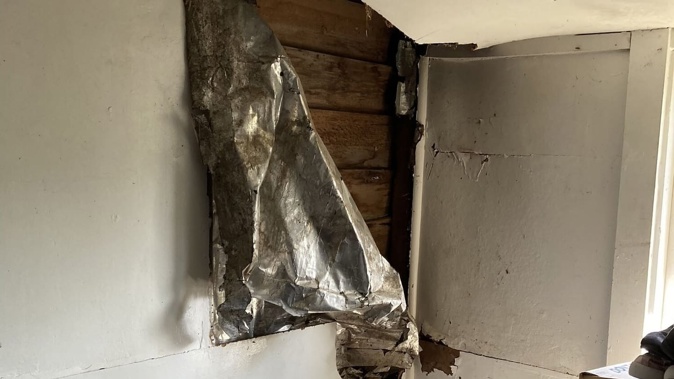
The tenant lived in a dwelling on the landlord’s property from May 2021 until March 2024. The dwelling had visible mould, no underfloor insulation, and numerous holes in the walls and ceilings.
There were also damaged windows with rotten frames, signs of roof damage, visible vegetation on the guttering and electrical cables outside the house that were exposed to the weather.
The Tenancy Compliance and Investigations Team (TCIT) in the Ministry of Business, Innovation and Employment (MBIE) opened an investigation into the tenancy and visited the property after receiving a complaint in August 2023 from an employee of a social assistance provider.
 External window frame damage, seen at a Northland property which was the subject of a recent Tenancy Tribunal decision.
External window frame damage, seen at a Northland property which was the subject of a recent Tenancy Tribunal decision.
The tenant told TCIT investigators that she had a tenancy agreement but did not pay a bond to the landlord, who did not inspect the property and failed to follow through on promises to help address some of the issues she had identified.
The landlord admitted on more than one occasion that the property was not fit for human habitation, saying it had been empty for years for a reason and was never intended for anyone to live in.
 The Northland property had electrical cables outside which were exposed to weather.
The Northland property had electrical cables outside which were exposed to weather.
Brett Wilson, TCIT national manager, said all landlords have obligations they must meet under the Residential Tenancies Act.
This included ensuring the property is provided and maintained in a reasonable state of repair, he said.
“These obligations are not optional; they are a legal requirement. It is not an excuse for the landlord to say they had not intended to rent out the premises, the fact is they did and that means they have a responsibility to comply with the Act,” Wilson said.
“Despite raising multiple issues with the landlord, who is also a family relative, these matters were either ignored or not fully resolved. In one instance, on being advised there was a large gaping hole in the end room, the landlord said he told the tenant to close the door and not to use the room as a living space.”
At the Tenancy Tribunal, the landlord accepted that he had breached multiple sections of the Residential Tenancies Act.
This included failing to state that he will comply with the healthy homes standards in the tenancy agreement, failing to insulate the property to the required standard, and failing to provide and maintain the premises in a reasonable state of repair.
The tribunal ordered the landlord to pay $5900 in exemplary damages to the tenant and reimbursement of the application filing fee.
The landlord’s name was suppressed. The adjudicator said the landlord fully engaged with the tribunal process, including mediation, and that any publication may lead to the identification of the tenant.
Take your Radio, Podcasts and Music with you









